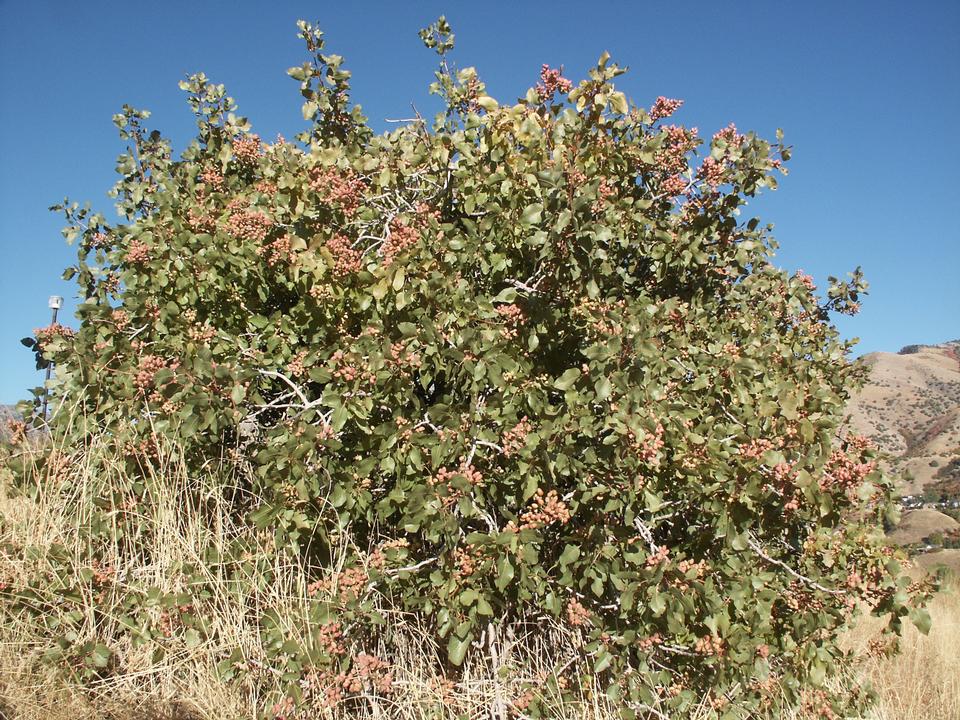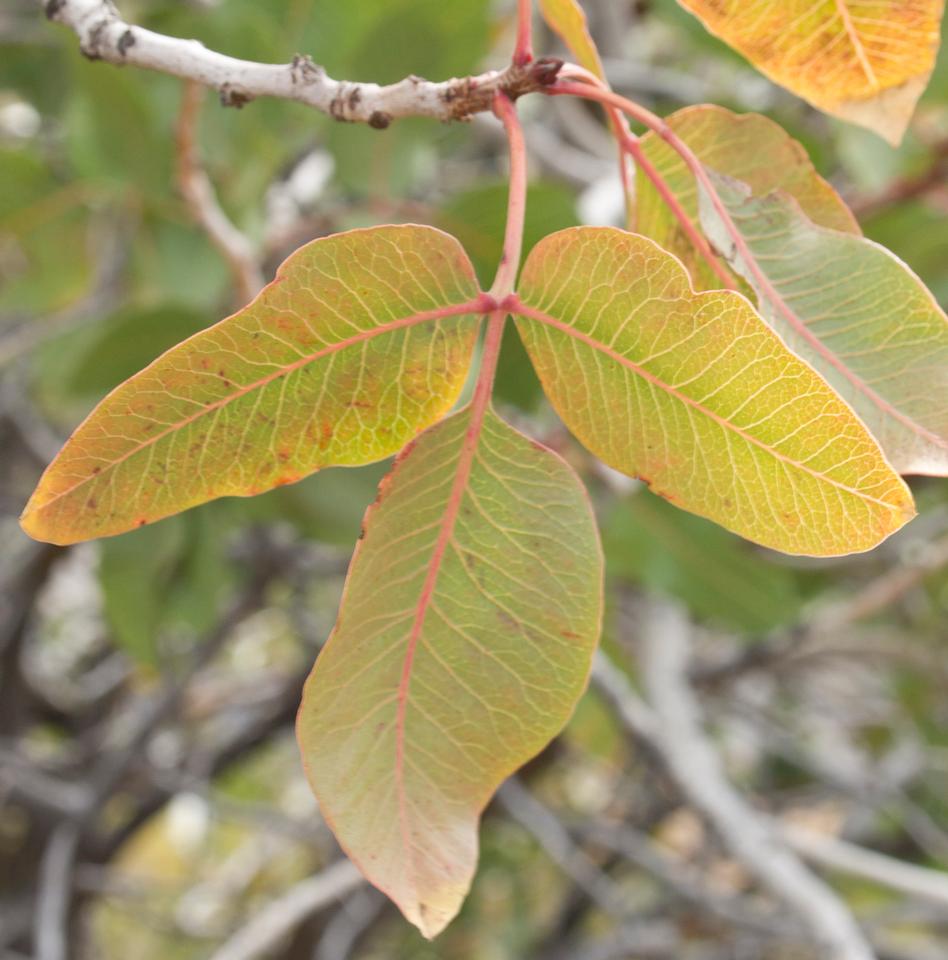Pistachio
Pistacia vera
Anacardiaceae - Cashew
Description
Leaves: Grayish; compound; 8" long; 3-5 leaflets per leaf (occasionally 1-7), 2" to 4" long; deciduous.
Twigs/buds: Similar to P. chinensis, its close relative; little information available.
Flowers/fruit: Flowers dioecious; brownish-green; borne in panicles, lack petals, occur in early summer, inconspicuous. Fruit a drupe or nut with an edible seed, reddish or pale tan, wrinkled; oval, 3/4" to 1" long, borne in clusters like grapes; kernel protected by creamy white, bony shell.
Bark: Light gray; furrowed.
Wood: Little information available; presumably somewhat similar to P. chinensis, which is hard and rot resistant.
General: Probably native to Asia, though it has long been grown in Asia Minor and the Mediterranean region. Small bushy tree up to 30' in height. Cultivated for edible pistachio nuts - not for ornament. Cold intolerant; requires long summers, heat, dryness, and mild winters. Prefers full sun and well-drained soils.
Landscape Use: Pistachio, the common pistachio nut, can be grown in Utah. I have seen several of these small trees growing on a rocky, windy, south-facing hillside overlooking the Logan River in Logan. They receive no irrigation or care at all, yet do quite well and bear good, large fruit. I assume they are not grafted, since the P. chinensis rootstock likely would not be cold-hardy and these trees seem unaffected by the cold. The compound leaves are fleshy and the leaves and fruit turn a nice orange-red in the fall. Zones 4-9.
Characteristics
General
| Family | Anacardiaceae - Cashew |
|---|---|
| Cultivar Availability | No |
| Hardiness Zone | 4-9 |
| Type | Broadleaf |
| Utah Native | No |
Growth
| Growth Rate | Low |
|---|---|
| Mature Height | Low |
| Longevity | High |
| Is Good Under Power Lines | Yes |
| Crown Shapes | Rounded |
Ornamental
| Bark | No |
|---|---|
| Fall Color | Yes |
| Flowers | No |
| Foliage | Yes |
| Fruit | Yes |
Tolerance
| Shade | Low |
|---|---|
| Salt | High |
| Drought | High |
| Poor Drainage | Medium |
| Alkalinity | High |
| Transplanting | High |








